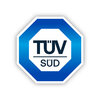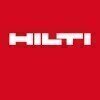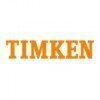Filter interviews by
Air India Engineering Services Interview Questions and Answers
12 Interview questions
Yes, there was a snag in the pre-cooler.
Yes, there was a blockage in the pre-cooler causing reduced airflow.
The snag was identified during routine maintenance checks.
The snag was rectified by cleaning out the blockage or replacing the affected part.
Aircraft technician tools include wrenches, screwdrivers, pliers, multimeters, and torque wrenches.
Wrenches
Screwdrivers
Pliers
Multimeters
Torque wrenches
A pre-cooler is a device used to cool air before it enters the engine for combustion.
Pre-coolers are commonly used in aircraft engines to increase efficiency and performance.
They can be either air-to-air or liquid-to-air heat exchangers.
Examples include intercoolers in turbocharged engines and ram air pre-coolers in high-speed aircraft.
B777 and B787 are both wide-body, twin-engine aircraft manufactured by Boeing, but they differ in terms of size, range, and technology.
B777 is larger and has a longer range compared to B787
B787 is more fuel-efficient and uses composite materials in its construction
B787 features advanced technologies like larger windows and improved cabin pressurization systems
B777 has been in service longer and has a proven track ...
No, the employee should not be allowed to take duty after consuming alcohol.
Allowing an employee to work after consuming alcohol can pose serious safety risks.
Alcohol impairs judgment, coordination, and reaction time, which are crucial for a service engineer's job.
It can lead to accidents, errors, and compromised customer service.
The company should have a clear policy on alcohol consumption and enforce it consiste...
The choice between hole standard system and shaft standard system depends on the specific requirements and constraints of the engineering project.
Hole standard system: Uses a fixed hole size and allows for variation in the shaft size. It is commonly used in applications where the hole is critical, such as bearings or press fits.
Shaft standard system: Uses a fixed shaft size and allows for variation in the hole siz...
I would immediately follow the company's bomb threat protocol and notify the appropriate authorities.
Remain calm and composed
Follow the company's bomb threat protocol
Notify the office management or security team
Evacuate the office if instructed to do so
Cooperate fully with law enforcement agencies
Do not touch any suspicious objects or packages
First Angle Projection and Third Angle Projection can be distinguished by the position of the object and the projection planes.
First Angle Projection places the object in the first quadrant and the projection planes are placed between the object and the observer.
Third Angle Projection places the object in the third quadrant and the projection planes are placed behind the object.
In First Angle Projection, the views...
I am interested in working on commercial aircraft, specifically wide-body jets.
I have experience working on various commercial aircraft models such as Boeing 747, Airbus A380, and Boeing 777.
I enjoy the complexity and challenges that come with maintaining and repairing wide-body jets.
I am familiar with the specific systems and components found in these aircraft types, which allows me to work efficiently and effect...
An accident is an unexpected and undesirable event that causes harm or damage. Precautions to prevent accidents include proper training, following safety protocols, and maintaining equipment.
Accidents are events that occur unexpectedly and result in harm or damage.
Preventing accidents involves taking precautions and following safety measures.
Proper training is essential to ensure employees are aware of potential h...
Air India Engineering Services Interview Experiences
6 interviews found
I applied via LinkedIn and was interviewed in Dec 2024. There were 2 interview rounds.
A group discussion in aviation is when a group of people, such as pilots, engineers, air traffic controllers, or other aviation professionals, come together to share ideas, solve problems, or discuss specific topics related to aviation. This could include safety measures, technical advancements, flight operations, or industry challenges. The goal is to exchange knowledge and make informed decisions for better performance and safety in aviation.
(2 Questions)
- Q1. AME TRAINEE Assisting senior engineers in routine maintenance tasks. Learning about aircraft systems such as engines, hydraulics, and avionics. Observing and following aviation safety procedures. Gaining ...
- Q2. Communication skills ChatGPT You said: Group discussion in aviation express this in simple terms ChatGPT said: ChatGPT A group discussion in aviation is when a group of people, such as pilots, engineers...
Interview Preparation Tips
- Maintenance
I applied via Newspaper Ad and was interviewed in Apr 2024. There were 2 interview rounds.
Simple MCQ questions like
1. What is CAR
2. ATA 28
3. ATA 73
4. Angle of Attack
5. Hydraulic fluid used- phosphate ester based.
6. Cat C MEL(minimum equipment list)- 10 days
Total 14 questions were there I don't recall others.
(5 Questions)
- Q1. It was Skill Assessment test. Initially they tried to access me by asking basic questions like my qualifications and experience in the field and based on that experience they asked questions. They asked ab...
- Q2. About my qualification and experience
- Q3. What is a pre-cooler?
- Ans.
A pre-cooler is a device used to cool air before it enters the engine for combustion.
Pre-coolers are commonly used in aircraft engines to increase efficiency and performance.
They can be either air-to-air or liquid-to-air heat exchangers.
Examples include intercoolers in turbocharged engines and ram air pre-coolers in high-speed aircraft.
- Q4. Was there a snag in that pre-cooler?
- Ans.
Yes, there was a snag in the pre-cooler.
Yes, there was a blockage in the pre-cooler causing reduced airflow.
The snag was identified during routine maintenance checks.
The snag was rectified by cleaning out the blockage or replacing the affected part.
- Q5. Identify the tools
- Ans.
Aircraft technician tools include wrenches, screwdrivers, pliers, multimeters, and torque wrenches.
Wrenches
Screwdrivers
Pliers
Multimeters
Torque wrenches
I applied via Company Website and was interviewed in Sep 2023. There was 1 interview round.
(3 Questions)
- Q1. What all did you observe in the Actual Environment Training
- Q2. Difference between b777 and b787
- Ans.
B777 and B787 are both wide-body, twin-engine aircraft manufactured by Boeing, but they differ in terms of size, range, and technology.
B777 is larger and has a longer range compared to B787
B787 is more fuel-efficient and uses composite materials in its construction
B787 features advanced technologies like larger windows and improved cabin pressurization systems
B777 has been in service longer and has a proven track recor...
- Q3. Tools used in aviation maintenance
- Ans.
Various tools used in aviation maintenance include wrenches, screwdrivers, pliers, torque wrenches, multimeters, and inspection mirrors.
Wrenches
Screwdrivers
Pliers
Torque wrenches
Multimeters
Inspection mirrors
I applied via Company Website and was interviewed in Mar 2023. There were 2 interview rounds.

(5 Questions)
- Q1. Only project engineering
- Ans.
Yes I m only project engineering
- Q2. Only project engineer
- Q3. Regarding project and power system
- Q4. Normally questions and talk
- Q5. Normally questions and want to.nomal.ques
Interview Preparation Tips
I applied via Newspaper Ad and was interviewed before Oct 2022. There were 2 interview rounds.

(6 Questions)
- Q1. How do you distinguish First Angle Projection and Third Angle Projection by seeing Engineering Drawing?
- Ans.
First Angle Projection and Third Angle Projection can be distinguished by the position of the object and the projection planes.
First Angle Projection places the object in the first quadrant and the projection planes are placed between the object and the observer.
Third Angle Projection places the object in the third quadrant and the projection planes are placed behind the object.
In First Angle Projection, the views are ...
- Q2. Hole standard system or Shaft standard system to be followed, what are merits and demerits
- Ans.
The choice between hole standard system and shaft standard system depends on the specific requirements and constraints of the engineering project.
Hole standard system: Uses a fixed hole size and allows for variation in the shaft size. It is commonly used in applications where the hole is critical, such as bearings or press fits.
Shaft standard system: Uses a fixed shaft size and allows for variation in the hole size. It...
- Q3. If an employee came to duty after consuming alcohol, you take him duty or not
- Ans.
No, the employee should not be allowed to take duty after consuming alcohol.
Allowing an employee to work after consuming alcohol can pose serious safety risks.
Alcohol impairs judgment, coordination, and reaction time, which are crucial for a service engineer's job.
It can lead to accidents, errors, and compromised customer service.
The company should have a clear policy on alcohol consumption and enforce it consistently.
...
- Q4. Define accident, what are the precautions you take to prevent accident?
- Ans.
An accident is an unexpected and undesirable event that causes harm or damage. Precautions to prevent accidents include proper training, following safety protocols, and maintaining equipment.
Accidents are events that occur unexpectedly and result in harm or damage.
Preventing accidents involves taking precautions and following safety measures.
Proper training is essential to ensure employees are aware of potential hazard...
- Q5. What are the types of Fire? How do you protect from fire accidents, What is the assembling point?
- Ans.
Types of fire include Class A, B, C, D, and K. Fire protection measures include fire extinguishers, sprinkler systems, and fire alarms. Assembling points are designated safe areas during emergencies.
Types of fire: Class A (ordinary combustibles), Class B (flammable liquids), Class C (electrical fires), Class D (flammable metals), and Class K (cooking oils and fats)
Fire protection measures: fire extinguishers, sprinkler...
- Q6. If you receive a threat call saying a Bomb was placed in your office, how you will react to the situation
- Ans.
I would immediately follow the company's bomb threat protocol and notify the appropriate authorities.
Remain calm and composed
Follow the company's bomb threat protocol
Notify the office management or security team
Evacuate the office if instructed to do so
Cooperate fully with law enforcement agencies
Do not touch any suspicious objects or packages
I applied via Company Website and was interviewed before Apr 2021. There was 1 interview round.
(8 Questions)
- Q1. Share details of your previous job.
- Q2. What is your family background?
- Q3. Why are you looking for a change?
- Q4. Where do you see yourself in 5 years?
- Q5. What are your strengths and weaknesses?
- Q6. Tell me about yourself.
- Q7. Why should we hire you?
- Q8. For which type aircraft do want to work?
- Ans.
I am interested in working on commercial aircraft, specifically wide-body jets.
I have experience working on various commercial aircraft models such as Boeing 747, Airbus A380, and Boeing 777.
I enjoy the complexity and challenges that come with maintaining and repairing wide-body jets.
I am familiar with the specific systems and components found in these aircraft types, which allows me to work efficiently and effectively...
Interview Preparation Tips
- Aeronautical engineering
- Mechanical Engineering
- Electrical Engineering
- Information Technology
- Mba Finance
At first you will have to completed any technical degree like BTECH in aeronautical engineering .
If you want admission in non aviation company you have to complete BTech from any dicipline.
Don't give someone money for airport job. There are many fraudulant.
Always go through proper company recruitment. Tha'ts all.
Top trending discussions






Interview questions from similar companies

I applied via Recruitment Consultant and was interviewed before Apr 2020. There was 1 interview round.
Interview Questionnaire
1 Question
- Q1. Overall work experience
- Ans.
I have over five years of experience in data analysis, focusing on transforming data into actionable insights for business growth.
Worked at XYZ Corp, where I analyzed sales data to identify trends, leading to a 15% increase in quarterly revenue.
Utilized SQL and Python for data extraction and manipulation, improving reporting efficiency by 30%.
Collaborated with cross-functional teams to develop dashboards that visualize...
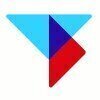
I applied via Naukri.com and was interviewed before May 2020. There was 1 interview round.
Interview Questionnaire
1 Question
- Q1. Write the equation for dynamics and wave spectra equations. I do not remember questions as it is 3 years back.
Interview Preparation Tips

I appeared for an interview in Jan 2017.
Interview Questionnaire
3 Questions
- Q1. Tell us about yourself.
- Ans.
I am a recent graduate with a degree in Computer Science and a passion for coding and problem-solving.
Recent graduate with a degree in Computer Science
Passionate about coding and problem-solving
Strong communication and teamwork skills
- Q2. Tell us about your involvement in sports and your activities.
- Ans.
I have been actively involved in sports since childhood, participating in various team sports and individual activities.
Played soccer for 10 years, competing at a regional level
Participated in track and field events in high school, specializing in long jump and hurdles
Currently enjoy hiking and rock climbing in my free time
- Q3. Discussion of company policies about side income and startups.
Interview Preparation Tips
Experience: It was pretty easy and generic. Not much related to my branch i.e. Chemical Engineering. Out of 24, 6 were selected for the next round.
Duration: 1 hour 30 minutes
Round: Group Discussion
Experience: 6 of us were given the choice between 2 topics: online shopping vs. Conventional shopping, and the success of swachh bharat. We selected the prior one after a discussion of 1 minute. We were given 3 minutes to brainstorm and 12 minutes to speak, so 12+3 = 15 minutes total. The mediators, that is the HR lady and the technical gentleman, just listened, did not interfere in our discussions.
Tips: Like any GD, it's crucial to demonstrate leadership without being patronising. And to dominate without being disrespectful to others. While it's ok not to take a rigid stance in a GD, it certainly gets you bonus points if you can convince the other person and "bring them to your side". It's not a debate, so even if you argue, you have to come to a more-or-less unanimous conclusion within the set time so your discussion must have a set direction. Bonus points if you're the one giving the direction.
Duration: 15 minutes
Round: HR Interview
Experience: It was for about 10-15 minutes. The HR lady and the tech gentleman were very chill. They began by asking me about myself. I have a startup of my own so I gave a short intro about myself, my immediate family, my goals and then into my startup. They had gone through my CV so they started asking about my activities in college and what I was doing. I think they were trying to figure out my character and if all of it was genuine. Then I again started talking about my startup, so they finally relented and asked me about it. I explained the idea to them and told them that I would want to continue working on my startup. They told me that it was not in accordance with their company's policy to have an employee occupied full-time in two companies. Then I informed them that my startup was my priority, and we agreed that I would not be a good fit for Thermax.
Tips: Be confident, cool and open during the interview. You are already good if you've progressed to the last stage of the selection process. The interviewer already knows you have flair. What they want to figure out is that whether you are the right fit for their company's culture. If you're not, no matter how good you are, they will not select you. And that's ok.

I applied via Referral and was interviewed before Apr 2021. There was 1 interview round.
(1 Question)
- Q1. Maintenance phylosophy
Interview Preparation Tips
- Boe
- Energy manager
Air India Engineering Services Interview FAQs
Some of the top questions asked at the Air India Engineering Services interview -
Tell us how to improve this page.
Air India Engineering Services Interviews By Designations
- Air India Engineering Services Aircraft Technician Interview Questions
- Air India Engineering Services Electrical Project Engineer Interview Questions
- Air India Engineering Services Technician Interview Questions
- Air India Engineering Services Inplant Trainee Interview Questions
- Air India Engineering Services Service Engineer Interview Questions
Interview Questions for Popular Designations
Overall Interview Experience Rating
based on 7 interview experiences
Difficulty level
Duration
Interview Questions from Similar Companies
Air India Engineering Services Reviews and Ratings
based on 147 reviews
Rating in categories
|
Aircraft Maintenance Technician
34
salaries
| ₹2.2 L/yr - ₹5 L/yr |
|
Assistant Engineer
25
salaries
| ₹4.8 L/yr - ₹7 L/yr |
|
Aircraft Technician
23
salaries
| ₹3.2 L/yr - ₹5.8 L/yr |
|
Aircraft Maintenance Engineer
22
salaries
| ₹10.4 L/yr - ₹31.2 L/yr |
|
Assistant Supervisor
22
salaries
| ₹2.9 L/yr - ₹3.9 L/yr |

Thermax Limited

Cummins
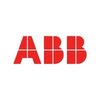
ABB

CNH ( Case New Holland)
- Home >
- Interviews >
- Air India Engineering Services Interview Questions



